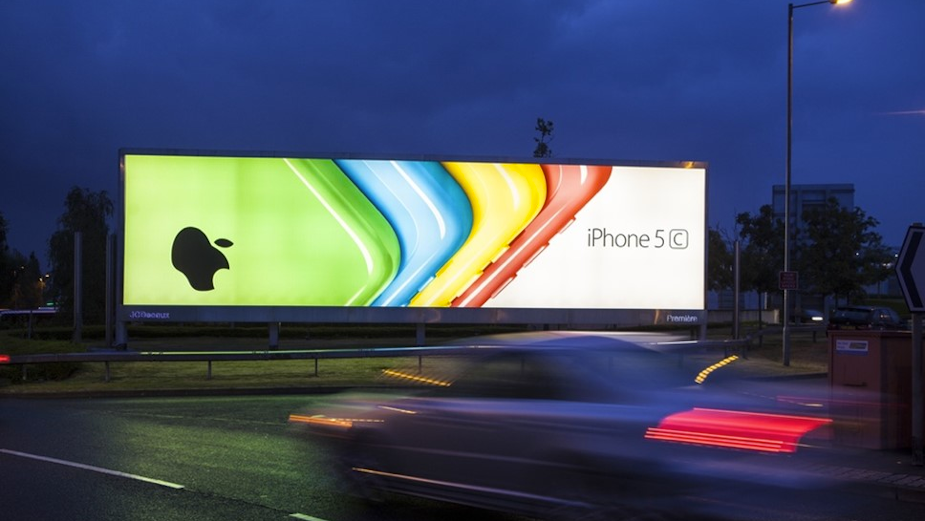
In Praise of Out of Home

Matt Willifer, CSO at Carat UK looks to an optimistic future for OOH after the impact of the Covid-19 pandemic on outside advertising.
2020 wasn’t a good year for Out Of Home. If
the Queen had a job in media (and, if she’s reading, it’s never too late), she
might even call it Out Of Home’s Annus
Horribilis.
However, let’s be optimistic about 2021, as we look ahead to when we will start to emerge from the pandemic, blinking in the light. With this in mind it seems a good time to set out the stall for OOH once again. Because whilst the short term has been hard, OOH has undergone an incredible evolution over the past five years. 50% of revenue is now digital; data can be used to target in new ways; and tech has increased the potential for even more creative impact.
OOH is an ever more flexible medium, able to exert influence at various stages along the customer journey. To help navigate these, we have split them into five …
First, is building brands through low involvement.
This is advertising influencing those who by and large have other things on their minds. In Kahneman’s language, this engages the System 1 brain – the thinking we are least conscious of. This works through building associations, not through logical persuasion – and so works fast. Dwell times for posters vary – but let’s just say that a couple of seconds is plenty for the System 1 brain to do its thing. Posters are the perfect medium for low involvement processing. Skipping past TV ads is a problem for TV ads; skipping past posters is pretty much what they are designed for.
This thinking takes in everything, not just the things we choose to concentrate on, and can work peripherally. As Robert Heath says: “We’re able to perceive things well in our periphery, but our brains delude us into thinking we cannot.” Posters are BIG (obvs). They hog a not insubstantial part of the environment our System 1 brains are constantly surveying; as such it is very likely that a good poster will work in exactly the way Heath describes. (As a build on this, peripheral vision is movement-sensitive, so as well as keeping it simple and visual, look to add movement through digital inventory.)
Second, is building brands through high Involvement.
This is OOH overcoming people’s passive stage apathy towards the advertised product. This is OOH that makes people stop and stare … or, at the very least, give a small nod of approval. These are the poster boys of posters. Hello Boys. Labour isn’t working. Images and words writ large, demanding attention, garnering publicity.
The opportunity for this kind of OOH is greater than it has ever been: the expansion into data, tech and new formats, means there are more components to play with creatively. Movement. Sound. Smell. Data feeds. Face recognition. Context. Linked screens. And so on.
There are any number of brilliant examples here.
BA was an early example using live data feeds to great acclaim. By capturing flight data, the poster showed a child pointing at the sky when a plane flew by.
A Women’s Aid campaign was built on the insight that domestic abuse thrives when people choose to look the other way. The charity harnessed facial recognition technology – so that when passers-by ignored the poster, bruising on the woman’s face got worse.
And Hendricks created a scented tunnel wrap in Kings Cross, brightening up the commute with the smell of gin infusions.
Third, is the tight targeting of those closer to purchase.
This might be using data to target a group of people, a place, or a moment. New data feeds have transformed the potential for hyper precise marketing.
A campaign for Pandora advertised 110 stores with unique digital copy for each store location. A templated creative dynamically pulled in the distance to store individually to each site.
Increasingly data feeds such as these also encorporate store-level supply side data as well – and do this in real time.
Santander combined house price and live train data at stations to advertise mortgages - enticing people with cheaper properties that lay a stop or two further along their train line.
Pirinase used pollen data to activate only when the pollen levels were high, pulling in real time data to Posterscope’s platform.
Fourth is about letting people buy.
If the previous examples pointed people towards purchase, this is about sealing the deal there and then.
There are different available mechanics.
A campaign for Cancer Research UK won multiple awards through encorporating a simple ‘click to donate’ mechanic in the poster itself.
In Brazil, Nike used local graffiti artists to add Nike Air Max sneakers to the feet of characters in their artworks. Customers then clicked through to buy the special trainers using only their specific geolocation.
With 5G and the renaissance of the QR code, people are becoming more comfortable with click to buy mechanics. Looking ahead, as we get more wearable devices like smart glasses, this will become even more intuitive – OOH will just be an extension of a store.
Finally, the last stage of the customer journey: usage and advocacy.
OOH can amplify the views of customers: for example, freeing positive Tweets from the small screen and having them writ large on posters. Not only does this sheer physical presence give positive sentiment greater weight, it also plays to the psychological phenomenon of social proofing.
In a less explicitly self-serving manner, OOH can also give users their moment in the spotlight. Cadbury invited people to invent their next chocolate bar, and celebrated winners on posters. The same goes for the famous Apple campaign – Selfies on iPhone X. Beautiful faces of Apple users, beaming out across cities, illuminated and six feet high. We think there’s a bit in all of us that wouldn’t say no to that …













